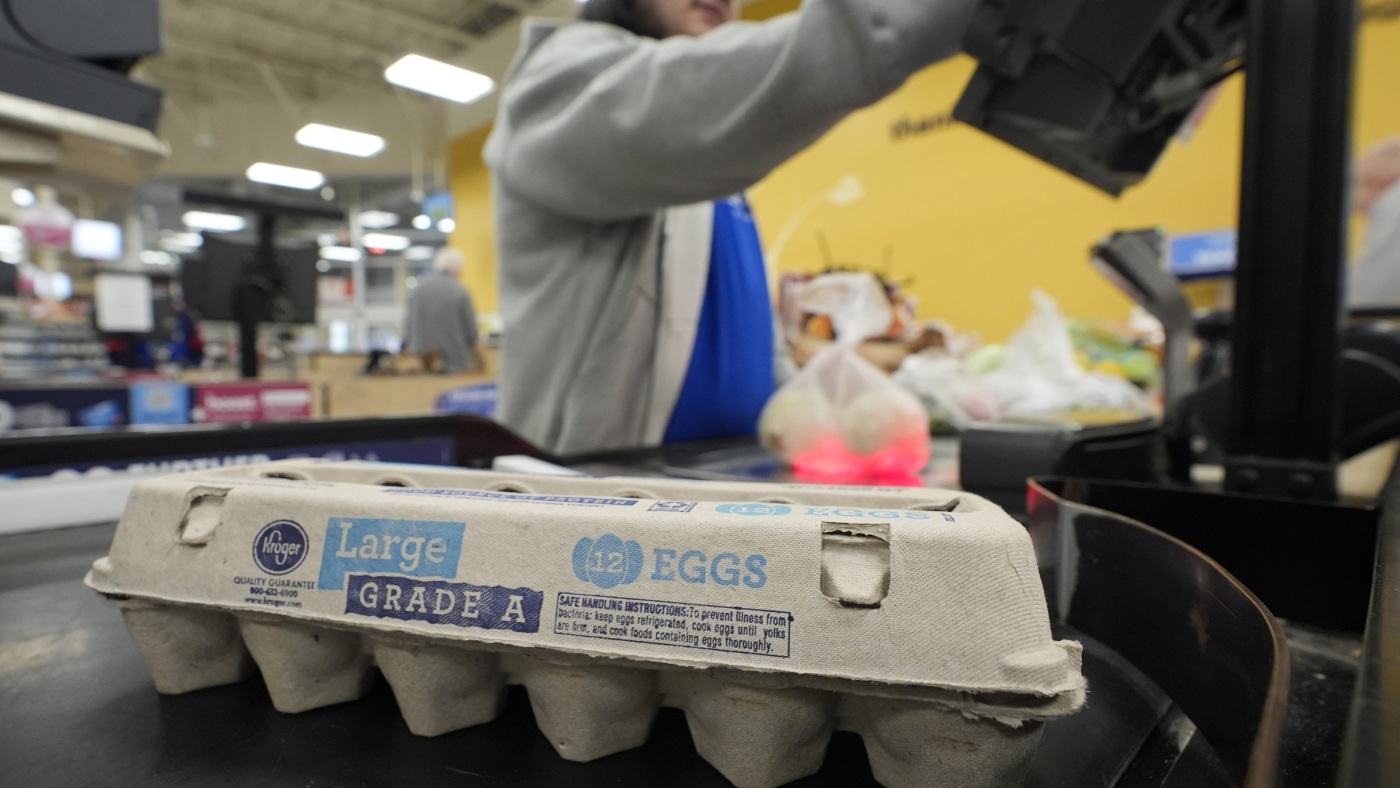The Complex Dynamics of U.S. Egg Prices
The recent decline in U.S. egg prices, following months of steady increases, reveals a intricate interplay of economic trends, agricultural hurdles, and consumer behavior. Understanding this multifaceted narrative is crucial for consumers, industry stakeholders, and policymakers alike.
A Record-Setting Decline
In April, the average price for a dozen Grade A eggs dropped to $5.12, marking the first month-to-month decline since October 2024. This 12.7% decrease is the most significant monthly drop since March 1984, signaling a substantial shift in market dynamics. This decline is particularly striking given that egg prices had soared to a record high of $6.23 in March, driven by a persistent bird flu outbreak that has devastated flocks of egg-laying hens.
The Bird Flu Impact
The bird flu outbreak, which began in 2022, has been a primary driver of the soaring egg prices. The highly pathogenic avian influenza (HPAI) has led to the culling of over 169 million birds, drastically reducing the supply of eggs. This supply shock has caused prices to skyrocket, with the average cost of a dozen eggs increasing by more than 350% compared to the same period last year. The outbreak has disrupted the egg-laying industry, forcing farmers to euthanize entire flocks to prevent the spread of the disease, further exacerbating the supply shortage.
Agricultural Challenges
The bird flu outbreak has presented unprecedented challenges for the agricultural sector. Farmers have had to make difficult decisions to protect their remaining flocks, often at significant financial and emotional cost. The culling of millions of birds has not only reduced supply but also increased the workload and stress on remaining flocks, potentially leading to further disruptions in the future.
Consumer Demand and Seasonal Factors
Consumer demand, particularly around holidays like Easter and Passover, has also influenced price fluctuations. High demand during these periods can drive up prices, even as supply remains constrained. However, the recent decline in prices suggests that demand may have stabilized or even decreased, allowing for a slight easing of prices.
Seasonal Demand
Seasonal demand plays a pivotal role in the egg market. Holidays and cultural events often lead to increased consumption, putting additional pressure on an already strained supply chain. Understanding and predicting these demand spikes is crucial for managing price volatility and ensuring a stable supply.
Economic Factors
Inflation and broader economic trends have also contributed to the high cost of eggs. The combination of inflation and the bird flu outbreak has created a perfect storm for price increases. Despite a slight drop in overall inflation, egg prices continued to rise, reflecting the unique challenges faced by the poultry industry.
Inflationary Pressures
Inflation has exacerbated the price increases in the egg market. As the cost of inputs such as feed and labor rises, producers are forced to pass these costs onto consumers. This, coupled with the supply disruptions caused by the bird flu outbreak, has led to a significant increase in egg prices.
Government Data and Market Intelligence
Government data, such as the Consumer Price Index (CPI) and reports from the U.S. Bureau of Labor Statistics, provide crucial insights into the price trends. The CPI data shows that the average price of eggs of all sizes fell by 12.7% in April, the steepest monthly decline since 1984. This data highlights the volatility of the egg market and the impact of external factors on pricing.
Market Intelligence
Market intelligence is essential for navigating the complexities of the egg market. By analyzing government data and industry reports, stakeholders can make informed decisions that help stabilize prices and ensure a reliable supply. This intelligence is particularly valuable in times of crisis, such as the current bird flu outbreak.
The Role of Imports
Imports have played a role in stabilizing the supply and easing prices. As domestic production has been disrupted by the bird flu outbreak, imports have helped to meet demand and prevent further price increases. However, the introduction of tariffs on imports could potentially disrupt this stabilizing factor, leading to renewed price pressures.
Import Dynamics
The dynamics of imports are crucial for maintaining a stable egg supply. While imports have helped to mitigate the impact of the bird flu outbreak, they also introduce new variables into the market. Tariffs and trade policies can significantly affect the availability and cost of imported eggs, making it essential to monitor these factors closely.
Market Outlook
While the recent decline in egg prices is a welcome relief for consumers, the underlying challenges remain. The bird flu outbreak continues to pose a significant threat to the egg-laying industry, and the potential for future outbreaks could lead to renewed price increases. Additionally, the introduction of tariffs on imports could further disrupt the market, making it difficult to predict future price trends.
Future Projections
Projecting future trends in the egg market requires a careful analysis of multiple factors. The ongoing bird flu outbreak, potential tariffs on imports, and fluctuating consumer demand all play a role in shaping the market outlook. Stakeholders must remain adaptable and responsive to these changes to ensure a stable and affordable egg supply.
Conclusion: A Fragile Balance
The recent decline in U.S. egg prices offers a glimmer of hope for consumers, but the market remains fragile. The bird flu outbreak, inflation, and seasonal demand fluctuations continue to exert significant pressure on prices. As the industry navigates these challenges, the future of egg prices will depend on a delicate balance of supply, demand, and external factors. Consumers and industry stakeholders alike will need to remain vigilant and adaptable in the face of ongoing uncertainties. The road to stable and affordable egg prices is fraught with obstacles, but the recent decline serves as a reminder that change is possible, even in the most challenging circumstances.

